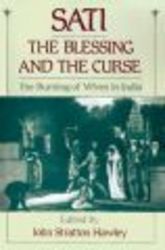Description
The article discusses the practice of sati, the burning of widows in India, and its various meanings and interpretations. It explores the conflicting views on sati, with some seeing it as a symbol of loyalty and self-sacrifice, while others view it as a violation of women's rights. The discussion includes perspectives from both Indian and American scholars, making it a postcolonial discussion. The contributors cover a range of topics, including the historical, cultural, religious, and psychological aspects of sati.
Several years ago in Rajasthan, an eighteen-year-old woman was burned on her husband's funeral pyre and thus became sati. Before ascending the pyre, she was expected to deliver both blessings and curses: blessings to guard her family and clan for many generations, and curses to prevent anyone from thwarting her desire to die. Sati also means blessing and curse in a broader sense. To those who revere it, sati symbolizes ultimate loyalty and self-sacrifice. It often figures near the core of a Hindu identity that feels embattled in a modern world. Yet to those who deplore it, sati is a curse, a violation of every woman's womanhood. It is murder mystified, and as such, the symbol of precisely what Hinduism should not be. In this volume a group of leading scholars consider the many meanings of sati: in India and the West; in literature, art, and opera; in religion, psychology, economics, and politics. With contributors who are both Indian and American, this is a genuinely binational, postcolonial discussion. Contributors include Karen Brown, Paul Courtright, Vidya Dehejia, Ainslie Embree, Dorothy Figueira, Lindsey Harlan, John Hawley, Robin Lewis, Ashis Nandy, and Veena Talwar Oldenburg.
